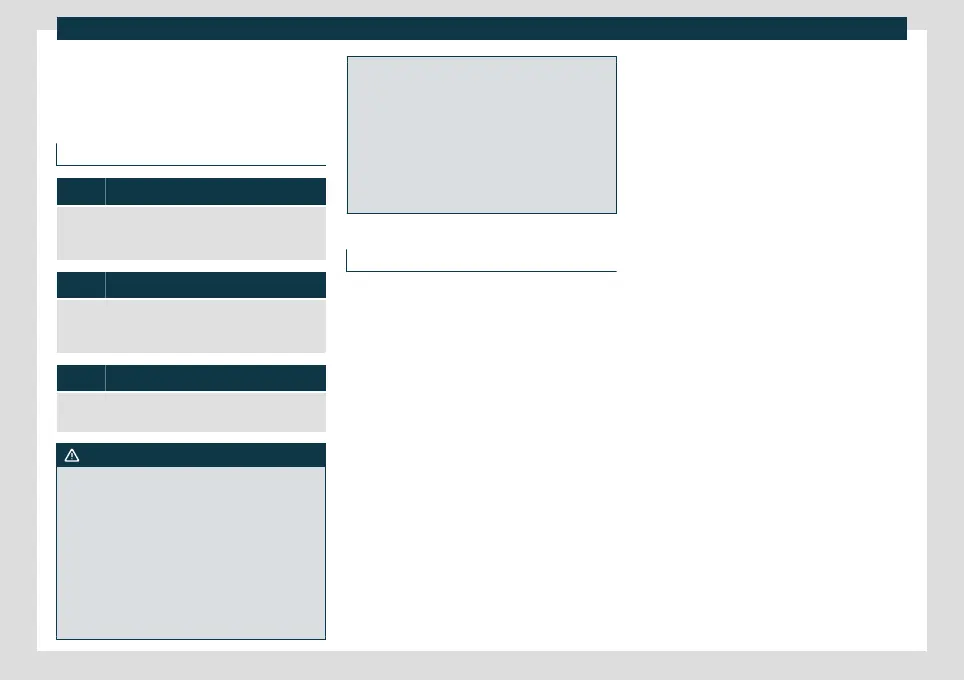Driving
Braking and parking
Braking system
Control lamps
It lights up red
Brake fluid level too low
›››
page 328 or fault in the
brake system.
Do not carry on driving!
It lights up red
Electronic parking brake
›››
page 264 .
The warning lamp turns off when the handbrake is re-
leased.
It lights up yellow
Front brake pads worn.
Contact a specialised workshop immediately.
WARNING
●
If the brake warning lamp does not go
out or if it lights up when driving, the brake
fluid level in the reservoir is too lo so there
is a risk of an accident
›››
page 328, Brake
fluid. Stop the vehicle and do not drive on.
Obtain technical assistance.
●
If the brake warning lamp lights up to-
gether with the ABS lamp this could be
due to an ABS fault. When this function
fails, the rear wheels can lock up. Under
certain circumstances, the rear of the vehi-
cle may skid, with the dang
er of losing con-
trol. Stop and seek technical assistance.
●
If the lamp lights up, alone or accom-
panied by a warning message on the instru-
ment panel display, please go immediately
to a specialised workshop to check the
brake pads and to replace them if they are
worn.
Information about the brakes
New brake pads
F
or the fir
st 200 to 300 km (100 to 200
miles), new brake pads have not yet reached
their maximum braking capacity, and need
to be “run in” first. However, you can com-
pensate for the slightly reduced braking ef-
fect by applying more pressure on the brake
pedal. Avoid overloading the brakes while
running them in.
Wear
The rate of wear on the brake pads depends
a great deal on how you drive and the condi-
tions in which the vehicle is operated. This is
a particular problem in urban traffic and
short stretches, or with very sporty driving.
Depending on the speed, the braking force
and the environmental conditions (e.g. tem-
perature, air humidity, etc.) noises may be
produced when braking.
Wet roads or road salt
In certain situations (for example, on driving
through flooded areas, in severe downpours
or after washing the vehicle) the braking ac-
tion could be delayed if the discs and pads
are damp, or frozen in winter. In this case the
brakes should be “dried” by pressing the
brake pedal several times.
At high speed and with the windscreen wip-
ers activated, the brake pads will briefly
touch the brake discs. This takes place, al-
though unnoticeable to the driver, at regular
intervals to improve the response time of the
brakes when they are wet.
The effectiveness of the brakes can also be
temporarily reduced if the vehicle is driven
for some distance without using the brakes
when there is a lot of salt on the road in win-
ter. The layer of salt that accumulates on the
discs and pads can be removed by gently ap-
plying the brakes a few times.
Corrosion
There may be a tendency for corrosion to
form on the discs and dirt to build up on the
brake pads if the vehicle is used infrequently
or the brakes are not used very often.
If the brakes are not used frequently, or if
rust has formed on the disks, it is advisable to
262

